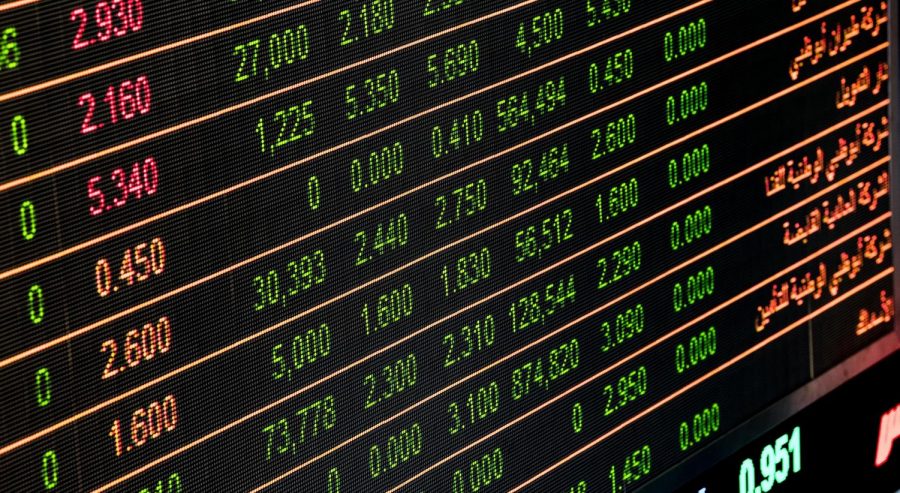Stock Market Investing
May 6, 2021
Stock Market Investing
The First Stock Market- Before we start talking about modern stock market trading and strategies, let’s talk about where it all began. Surprisingly, this dates back over 400 years! In 1602 there was a company called “Dutch East India company” that would sail long voyages and trade many goods in the East. They of course needed a lot of capital to do so. To raise money, they sold equity in their company to investors who wanted a part of the company’s profits. So the Dutch East India Company took their company “public”. What does this mean, when a company goes public? It means they offer equity in their company to investors through shares of stocks. This is called an initial public offering, or an (IPO).
Stock Exchanges- Then, in Amsterdam, the first stock exchange was created in 1611. Many companies would offer up part of their business for shares of stocks. People would buy up those shares, and sell them to other investors. Stocks are then traded between investors on stock exchanges. America didn’t adopt a stock exchange until the 1700s. Our first stock exchange being the Philadelphia Stock Exchange. In 1817, the New York Stock Exchange (NYSE) was founded on Wall Street. The street was named Wall Street because the Dutch constructed a literal wall bordering it. In 1971 the first electronic stock exchange was created, the NASDAQ. Nowadays basically all stock trading is completely electronic. The stock market is usually open from 9:30am – 4pm Monday-Friday. On these exchanges, there are four main stock investments you can buy. They include individual stocks, mutual funds, index funds, and exchange traded funds.
Individual Stocks- When people refer to “trading in the stock market” they’re usually referring to trading individual common stocks. Those are the shares of the business issued and sold by the company to the public. There is a certain amount of shares sold, each at a certain price, let’s say they set it at 50$. Once the shares are bought by the public, they are then traded between investors. These investors could be institutions, they could be investment funds, or they could be regular people like you and me. Just because the share price starts at 50$, it doesn’t mean it needs to stay there. Share price fluctuations are caused by supply and demand. If more investors want to buy the stock than there are investors who want to sell the stock, the price will go up. Vise versa with the share price decreasing. When an investor buys shares of an individual company at let’s say 50$, they hope that sometime in the future, someone would be willing to buy that from them for more than 50$. But the share price could drop significantly, leaving investors in an awkward position. Remember with investing, there is always risk. Individual stocks are of the more risky investments compared to other stock choices
Actively Managed Mutual Funds- Individual stocks are tricky, and they take time. They take time because you need to individually pick each stock to invest in. You study their business and their numbers, you have to choose when you want to buy and sell them, and you have to study their growth and predict its future. This is tricky and time consuming. Not everyone wants to pick and choose their own investments, so in the 1890’s the mutual fund was created! An actively mutual fund is a managed professional fund. An actively managed fund is where inside the fund, stocks are bought and sold throughout the year. With a mutual fund, you pool your money with other investors, and is actively managed by professionals, or a group of professionals. These tend to be well diversified, and hold dozens of different stocks. Because your money is being managed by someone else, you have to pay a fee for that.
Index Funds / Exchange Traded Funds- Before we talk about what an index fund is, let’s talk about what a stock index is. A stock index tracks the performance of a group of stocks. Here are a few examples of America’s most popular indexes. The Dow Jones Industrial Average, The Nasdaq 100 Composite, The Standard and Poor’s 500, and the Russel 2000. Each of these indexes track a different group of stocks. These indexes can be invested in through “index funds”! Probably the most popular index fund is a fund that tracks the S&P 500. When you invest in an S&P 500 fund, you are buying a small piece of 500 of the largest stocks in the world. You don’t have to worry about picking the correct individual stocks, you just buy all of them. Many people buy into the S&P 500 and just hold on to it for years, and even decades. This is what’s known as passive investing. Not worrying about buying and selling, and not trying to time the market. Passive index fund investors believe that it’s hard to time the market and also outperform the market. So they just buy into it. An exchange traded fund is also a basket of stocks that can be bought all together and tracks the performance of those stocks. The main difference between ETF and an index fund is that ETFs can be traded during the day. Index funds can only be bought and sold at the beginning and end of the day, similar to mutual funds.











